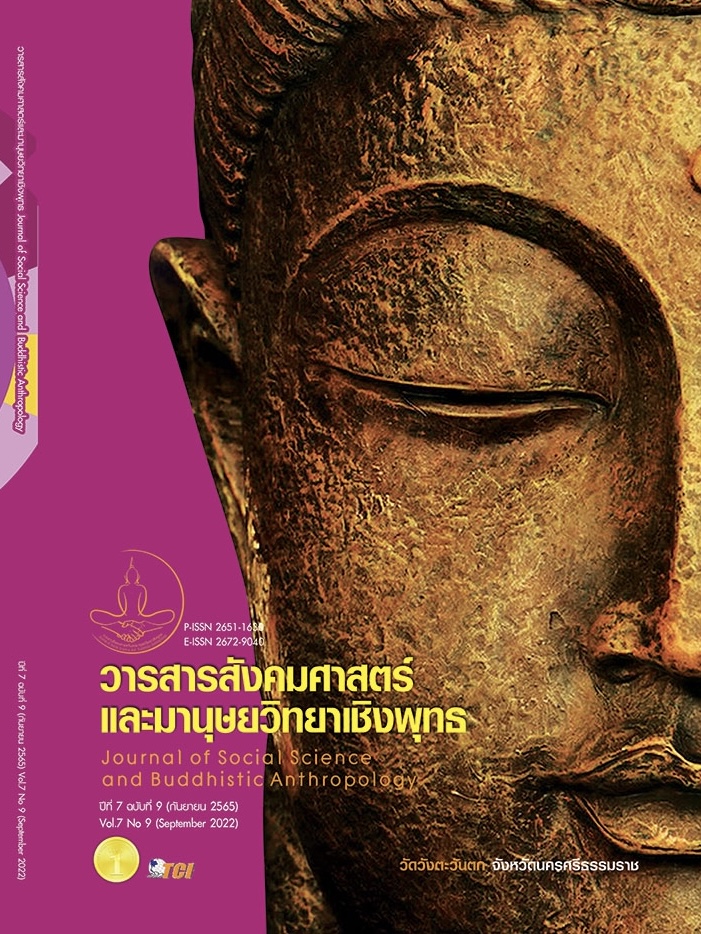THE STRUCTURAL EQUATION MODEL OF STORE IMAGE FACTORS INFLUENCING ONLINE PURCHASE INTENTIONS: A CASE STUDY OF DEPARTMENT STORES IN THAILAND
Keywords:
Store Image Factors, Online Purchase Intention, Department Stores in ThailandAbstract
The objective of this research article was to study the influence of offline and online department store image on online purchase intentions under a case study of department stores in Thailand with their urgent needs in adaptation for business survival by expanding online platforms to respond to consumers’ increasing need who preferred to shop online. The population was consumers with and without their prior experience in online shopping of major department stores in Thailand, thus the exact population size was unknown. Non-probability sampling through a quota sampling was used to select the sample to collect data. Seven areas of Thailand were divided as study area to collect data from 75 sets per area with a seven-point Likert scale online questionnaire, totaling 525 sets. The 352 complete questionnaires were obtained and analyzed using the descriptive statistics to determine frequency, percentage, mean and correlation coefficient as well as inferential statistics for analyzing the model validity measured based on a confirmatory factor analysis technique and a structural equation model to answer the research hypothesis. The major findings showed that the developed structural equation model was consistent with empirical data, indicating that offline store image had an indirectly positive influence on online purchase intention while a directly positive influence on both perceived usefulness and perceived enjoyment factors. In addition, perceived enjoyment factors were full mediators between offline store image and online purchase intention. Meanwhile, perceived ease of use factors had a directly positive influence on online purchase intention.
References
กรมส่งเสริมการค้าระหว่างประเทศ. (2560). การค้าปลีกรูปแบบใหม่ Clicks & Bricks. เรียกใช้เมื่อ 22 มกราคม 2562 จาก https://www.ditp.go.th/ditp_web61/article_sub_ view.php?filename
คนึงนิจต์ หนูเช็กและคณะ. (2561). การจัดการสินค้าและบริการในธุรกิจค้าปลีกสมัยใหม่ประเภทซุปเปอร์มาเก็ต. วารสารวิทยาการจัดการ, 5(2), 131-154.
ธนันธร มหาพรประจักษ์. (2563). ปรับธุรกิจให้อยู่รอดในยุค New Normal. เรียกใช้เมื่อ 10 มกราคม 2564 จาก https://www.bot.or.th/Thai/ResearchAndPublications/ DocLib_/Article_19Oct2020.pd
ธีรวีร์ วราธรไพบูลย์ และโสพิศ คำนวณชัย. (2562). การรับรู้และปัจจัยที่มีต่อความต้องการใช้บริการจัดส่งสินค้าจากร้านปลีกสมัยใหม่. วารสารวิทยาการจัดการมหาวิทยาลัยราชภัฏสุราษฎร์ธานี, 6(1), 143-156.
วิจัยกรุงศรี. (2562). แนวโน้มธุรกิจ/อุตสาหกรรมปี 2562-2564: ธุรกิจร้านค้าปลีกสมัยใหม่. เรียกใช้เมื่อ 24 พฤษภาคาม 2563 จาก https://www.krungsri.com/getmedia/ 3704e691-59de-4c82-890a-daf0015a8857/IO_Modern_Trade _190829_TH_EX.pdf.aspx
วิจัยกรุงศรี. (2564). แนวโน้มธุรกิจ/อุตสาหกรรมปี 2564 - 2566: ธุรกิจร้านค้าปลีกสมัยใหม่. เรียกใช้เมื่อ 12 สิงหาคม 2565 จาก https://www.krungsri.com/ th/research/industry/industry-outlook/wholesale-retail/modern-trade/io/ io-modern-trade-21
สำนักงานสถิติแห่งชาติ. (2562). สรุปผลที่สำคัญการสำรวจการมีการใช้เทคโนโลยีสารสนเทศและการสื่อสารในครัวเรือน พ.ศ. 2562. เรียกใช้เมื่อ 3 มกราคม 2563 จาก http://www.nso.go.th/sites/2014/DocLib13
เสริมยศ ธรรมรักษ์. (2559). ประสบการณ์แห่งแบรนด์บนโลกดิจิทัล: คน สาระ และเทคโนโลยี. วารสารพฤติกรรมศาสตร์เพื่อการพัฒนา, 8(2), 37-56.
อนุศาสตร์ สระทองเวียน. (2553). ธุรกิจค้าปลีก ประเทศไทย. วารสารนักบริหาร, 30(3), 134-142.
โอภาส เอี่ยมสิริวงศ์. (2556). พาณิชย์อิเล็กทรอนิกส์ (มุมมองด้านการบริหาร) (พิมพ์ครั้งที่ 1). กรุงเทพมหานคร : ซีเอ็ดยูเคชั่น.
Broekhuizen, T. (2006). Understanding channel purchase intentions. In Measuring online and offline shopping value perceptions in Doctoral dissertation. University of Groningen.
Chaffey, D. (2000). Achieving Internet marketing success. The Marketing Review, 1(1), 35-59.
Cheema, U. et al. (2013). The trend of online shopping in 21st century: Impact of enjoyment in TAM Model. Asian Journal of Empirical Research, 3(2), 131-141.
Davenport, T. & Redman, T. (2020). Your Organization Needs a Proprietary Data Strategy. United States of America: Harvard Business Review.
Davis, F. D. (1986). A technology acceptance model for empirically testing new end-user information systems: theory and resu. In Ph.D. In Management Dissertation. Massachusetts Institute of Technology.
Davis, F. D. et al. (1989). Perceived usefulness, perceived ease of use, and user acceptance of information technolog. MIS quarterly, 13(3), 319-340.
Hair, J. F. et al. (2014). Multivariate data analysis, new international edition. Harlow: Pearson Education.
Hilken, T. et al. (2018). Making omnichannel an augmented reality: the current and future state of the art. Journal of Research in Interactive Marketing, 12(4), 509-523.
Hosseini, Z. et al. (2014). Store image and its effect on customer perception of retail stores. Asian Social Science, 10(21), 223.
Kwon, W. S. & Lennon, S. J. (2009). Reciprocal effects between multichannel retailers’ offline and online brand images. Journal of retailing, 85(3), 376-390.
Riquelme, H. (2001). An empirical review of price behaviour on the internet. Electronic Markets, 11(4), 263-272.
Saprikis, V. (2018). Examining behavioral intention towards social commerce: An empirical investigation in university students. In Paper presented at the Proceedings of the 32nd. (pp. 15-16).IBIMA Conference. Seville, Spain.
Van der Heijden, H. & Verhagen, T. (2004). Online store image: conceptual foundations and empirical measurement. Information & management, 41(5), 609-617.
Verhagen, T. & Van Dolen, W. (2007). Explaining Online Purchase Intentions: A Multi-Channel Store Image Perspective. In in Faculty of Economics and Business Administration. Vrije Universiteit Amsterdam.
Verhagen, T. & Van Dolen, W. (2009). Online purchase intentions: A multi-channel store image perspectiv. Information & Management, 46(2), 77-82.
Widiyanto, G. & Wibowo, F. P. (2021). Analysis of the Effect Product Quality, Trustworthiness, Convenience, Perceptions of Usefulness and Price on Purchase Intention During the Covid Pandemic 19. Primanomics: Jurnal Ekonomi & Bisnis, 19(1), 181-190.
Wu, P. C. et al. (2011). The effect of store image and service quality on brand image and purchase intention for private label brands. Australasian Marketing Journal (AMJ), 19(1), 30-39.
Downloads
Published
How to Cite
Issue
Section
License

This work is licensed under a Creative Commons Attribution-NonCommercial-NoDerivatives 4.0 International License.








